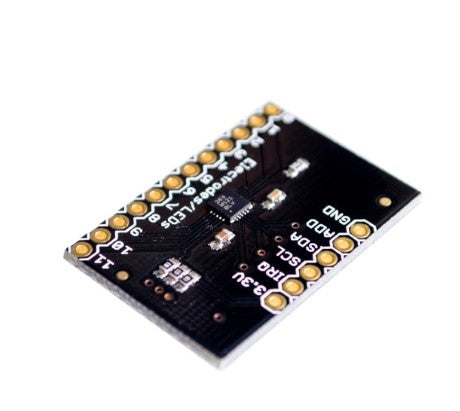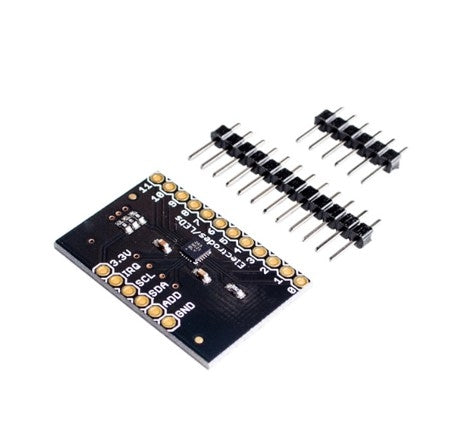Capacitive Touch 12-Key Sensor Breakout MPR121 - Add lots of touch sensors to your next microcontroller project with this easy-to-use 12-channel capacitive touch sensor breakout board, starring the MPR121. This chip can handle up to 12 individual touch pads.
The MPR121 has support for only I2C, which can be implemented with nearly any microcontroller. You can select one of 4 addresses with the ADDR pin, for a total of 48 capacitive touch pads on one I2C 2-wire bus. Using this chip is a lot easier than doing the capacitive sensing with analog inputs: it handles all the filtering for you and can be configured for more/less sensitivity.
Frequently Asked Questions
Capacitive Touch 12-Key Sensor Breakout MPR121
This chip is capable of managing up to 12 different touch pads. Only I2C, which can be used with almost any microcontroller, is supported by the MPR121. One I2C 2-wire bus may support 48 capacitive touch pads with a total of 4 addresses selectable through the ADDR pin.
What is a capacitive touch key?
Both a cap touch and a capacitive touch can be used to describe it. Cap touch has the potential to take the role of mechanical buttons. Comparatively speaking to cap touch, mechanical buttons are often relatively thick. Cap touch is particularly thin and flexible since it can be produced by screen printing conductive inks.
How do you use Capacitive Touch 12-Key Sensor Breakout MPR121?
Touching a capacitive touchscreen display requires the use of a glove, a specific capacitive pen, or a finger. This is to ensure that the panel can store electrical charges, which it has done. The position of the touch is indicated by a change in capacitance.
How does a Capacitive Touch 12-Key Sensor Breakout MPR121 work?
A conductive object's presence causes a change in capacitance, a system's capacity to store an electric charge, within its projected field, which is measured using capacitive sensing technology. Normally, such an object is a human finger, but it might also be any conductive object with a different dielectric than air.
A capacitor, in a contrast to a battery, is a component of a circuit that temporarily stores electrical energy by spreading charged particles between (often two) plates to produce a potential difference. A capacitor may charge faster than a battery and can discharge its whole stored energy in a few seconds.
Getting started is a breeze with our Arduino library and tutorial. You'll be up and running in a few minutes, and if you are using another microcontroller, its easy to port our code.
QUICK LINKS:
Capacitive Touch 12-Key Sensor Breakout MPR121
Capacitive Touch 12-Key Sensor Breakout MPR121
81 in stock
Product Code
SKU:AA086
Couldn't load pickup availability




